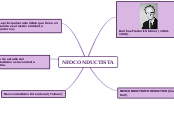ERROR DE TIPO
To name your story, you have to think about the overall message and what you want your audience to understand from the story. Also, make it relevant and easy to remember.
EJEMPLOS
The ending of a story is essential. We all know that if the ending is weak, what happened before loses its importance. So make it unpredictable, but fair. A resolved ending answers all the questions and ties up any loose threads from the plot.
El cazador que dispara a una persona creyendo que es un animal
This is the closure section of the story.
See examples of possible outcomes below:
- all problems have been solved
- it's clear how each one of your characters ends up
- your main character is transformed by the challenge
sería un error vencible
si el cazador suele llevar a cabo esta práctica de manera habitual y cuenta con años de experiencia
sería un error invencible
se puede entender que no haya sabido diferenciar a un animal de una persona en determinadas circunstancias (si esta oscuro o si arbustos, plantas o arboles le impedían buena visibilidad)
si el cazador tiene apenas 18 años y poca experiencia (principiante)
el sujeto pensaba que detrás del arbusto había un animal y en consecuencia su voluntad (dolo) iba dirigida a disparar y matar un animal
Try answering these questions in order for you to come up with a closure:
- Have all problems been solved?
- Is it clear what happens with all your characters in the story?
- Has the challenged transformed your main character?
- How do the characters feel in the end?
errónea representación mental
una persona que lleva una maleta que contiene varios kilos de cocaína y trata de pasar por el control de seguridad en un aeropuerto, pero no sabe que lleva la droga, pues esta fue introducida en su maleta por un tercero malintencionado
This is the moment when the main character surpasses the last obstacle and finally faces their greatest challenge.
The climax usually follows one of these patterns:
- realization
- resolution
- choice
Type in your answer.
Sin embargo, esta persona conoce que trasportar drogas es ilegal
En este caso, el actor no conoce que lleva droga ni desea llevarla, por lo que no hay dolo y la conducta es atípica
TIPOS
The middle of the story is where you add layers of complications that will lead to the end. Reveal more about the character's journey. Did their personality go through changes? How did they overcome the challenges? And as you build up the story’s central conflict, make it more personal to that character. Also, from the middle act, you have to lead into the final act.
INVENCIBLE
Your character(s) need(s) motivation in order to solve the challenge(s).
cuando el actor incurra en error invencible sobre una circunstancia que de lugar a una atenuación de punibilidad, se le aplicará la correspondiente disminución de la pena
Secondary characters also might have motivs beacuse of which they may cross path with main character or which might trigger them to help the main character.
cuando cualquier persona, en las mismas circunstancias, habría cometido el mismo error
Why does your character need to confront this challenge? What does he/she expect to accomplish by solving it?
See a few examples:
- will marry in 3 days
- can fix the mistakes of the past
VENCIBLE
Each story has a main character and that character usually needs to solve a problem or challenge. The character's challenge is the one that creates tension throughout the story.
la infracción sería castigada como imprudente
si se hubiera podido evitar
cuando a una persona, en las mismas circunstancias, le es razonablemente exigible que no cometa el error
In most stories, there are 3 challenges. The number 3 is a mystical number symbolizing completeness. Try to come up with interesting challenges with which your character needs to struggle.
See a few examples below:
- turns into a werewolf at night
- is sent back in time
¿QUÉ ES?
In the beginning of the story (or the exposition), you will need to introduce the setting and characters. You might also want to introduce the main conflict. This part of the story is important because it gives the reader necessary background information and maybe even a first insight into a character’s personality.
#10, ART. 32 C.P.
no hay lugar a responsabilidad penal cuando
Si el error fuere vencible, el actor debe responder solo si la conducta ha sido prevista por el legislador como culposa
“se obre con error invencible de que no concurre en su conducta un hecho constitutivo de la descripción típica o de que concurren los presupuestos objetivos de una causal que excluya la responsabilidad”
Cuando este error se comete, existe una exclusión del dolo y la conducta es atípica
The setting (time & place) of a story can change throughout the plot.
se presenta cuando el agente desconoce los elementos descriptivos o normativos
Characters are essential to a good story. Usually, the protagonist(s) is/are the most affected by the plot. Introduce a character by focusing on their actions, interests, and occupation, as the physical appearance doesn't make a difference in most cases.
los elementos objetivos del tipo penal
Type in the name of your character.










